The MQ-9B drone, known as Protector in UK service, could be a realistic option to augment the UK’s fleet of P-8 Poseidon Maritime Patrol Aircraft.
A recent announcement from the builders of Protector, General Atomics, signals their continued effort to push the aircraft as a viable, long endurance maritime patrol platform.
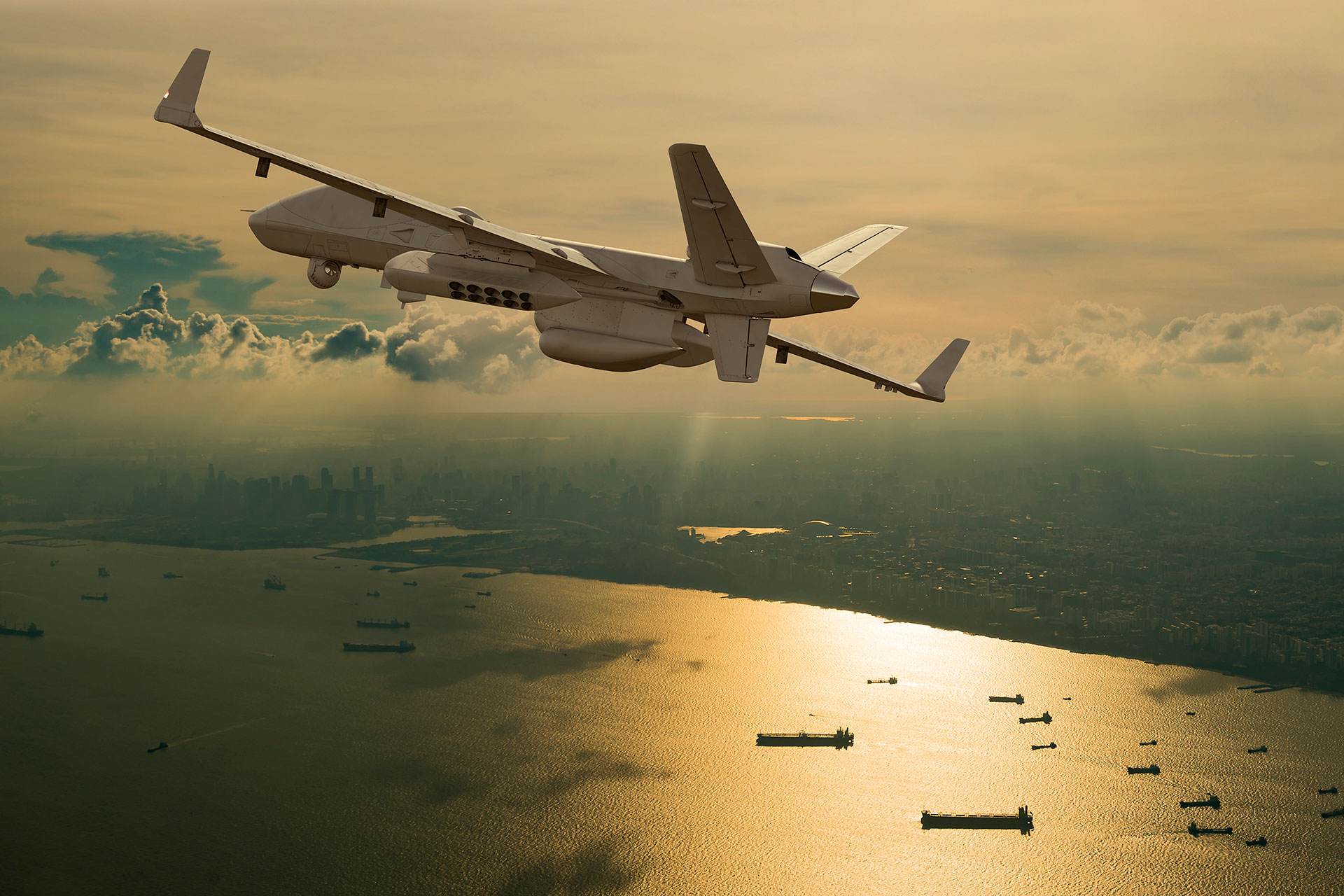
Let’s look at this basics.
What is Protector?
Protector is the British variant of the MQ-9B SkyGuardian and the UK intends to purchase 16 examples of the UAV to replace the RAF’s current fleet of MQ-9A Reapers.
Protector is the world’s first certified Remotely Piloted Air System, enabling it to fly in busy, unsegregated airspace, including civilian airspace, thanks to its ‘sense and avoid’ technology.
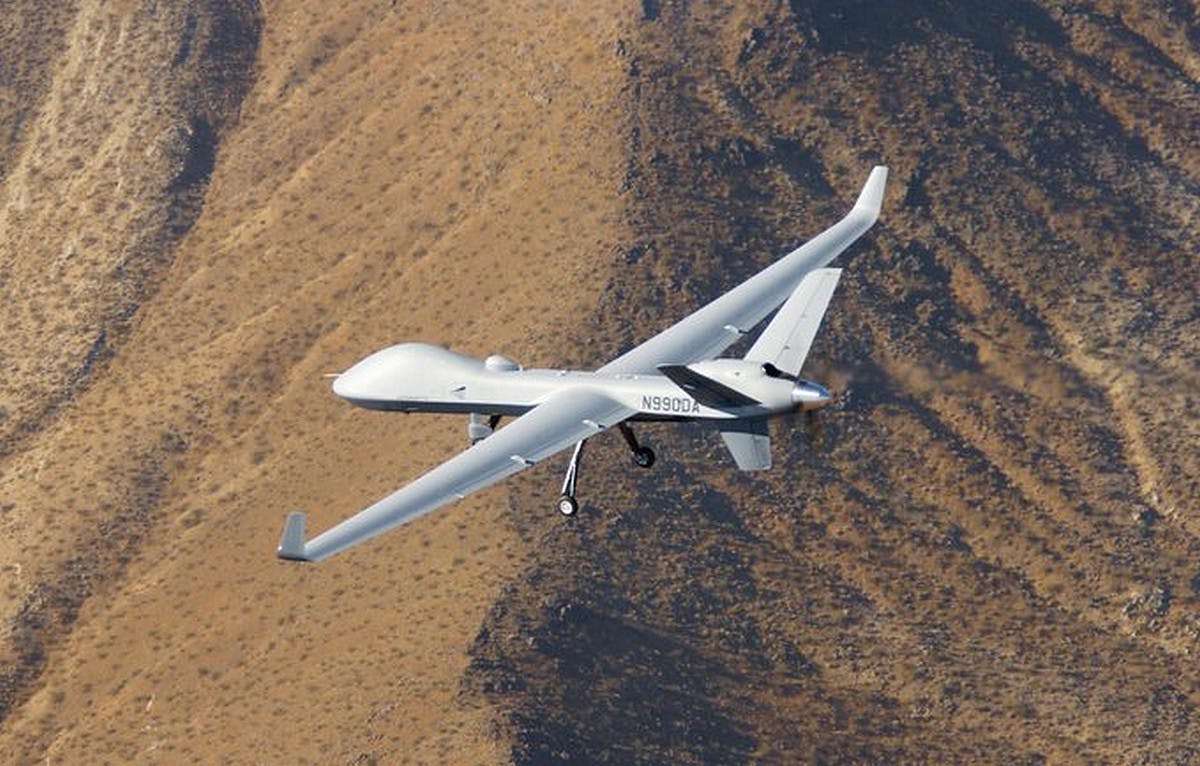
What is Poseidon and why would it need to be ‘augmented’?
The P-8 Poseidon, developed by Boeing, is designed to conduct anti-submarine warfare, anti-surface warfare, and shipping interdiction, along with an electronic signals intelligence role. This involves carrying torpedoes, anti-ship missiles and other weapons.
It’s one of the most capable maritime patrol aircraft ever to fly. The problem for the UK, according to a number of people, is that the UK order of nine aircraft just simply “isn’t enough”.
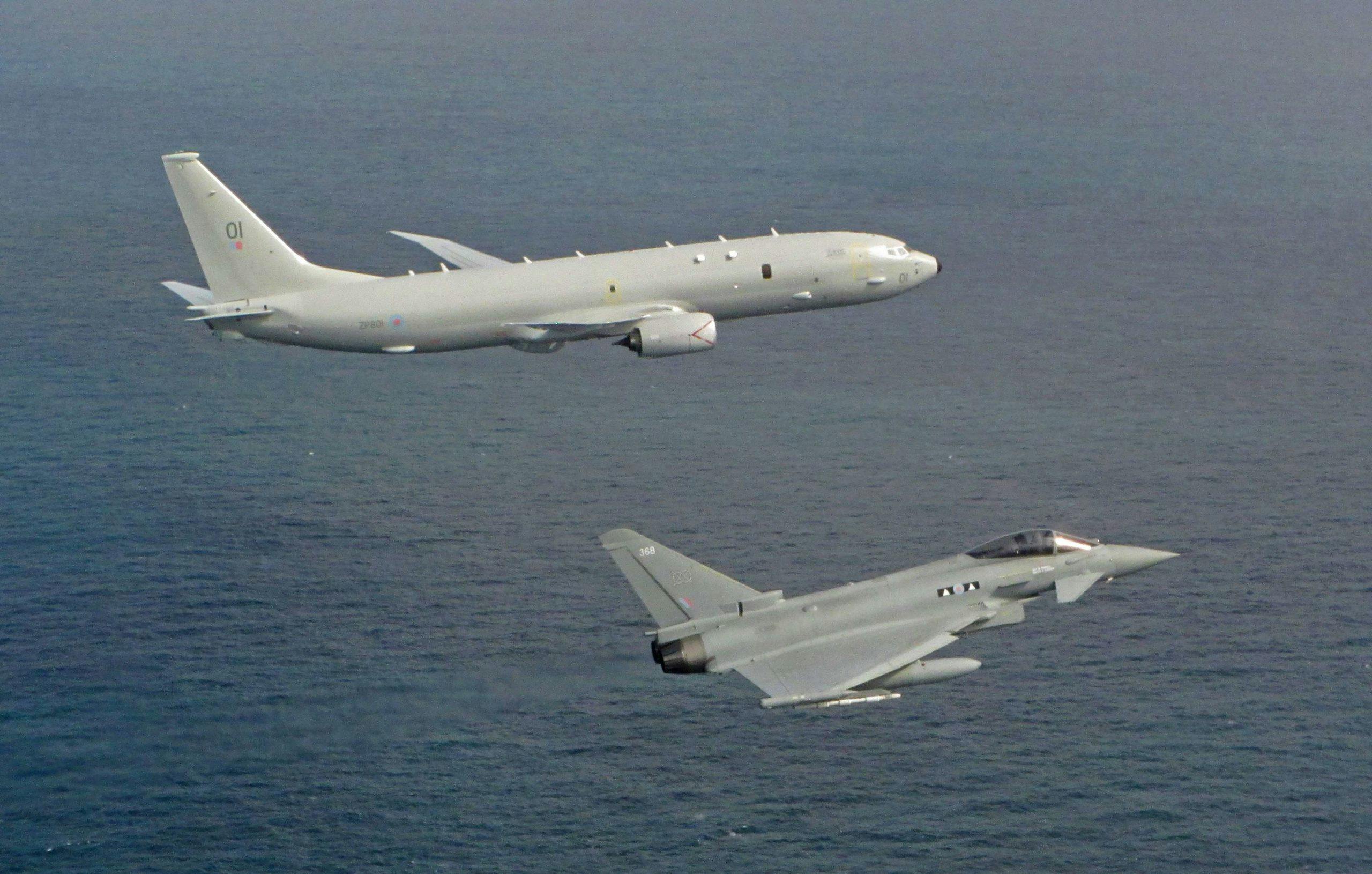
Back in 2018, we reported that many believe that number of P-8A Poseidon aircraft being purchased is “too low to fulfil the range of tasks under its responsibility”.
The Defence Committee advised in 2018 that it had received detailed written evidence from former RAF officers with extensive experience of ASW operations who argue that “the intended aircraft and crew provision for the MPA force is too low to fulfil the range of tasks under its responsibility.”
Their report on the procurement stated the follow:
“Unrealistic assumptions have been made about the ability of NATO allies to contribute to MPA provision and that at least 16 aircraft and a higher crewing requirement is needed to attain the necessary coverage.”
More numerous, cheaper aircraft able to augment the nine Poseidon aircraft seems like a no-brainer, surely?
What makes the two types similar enough for this to be an option?
Very little at first glance but recent news from Leonardo that General Atomics is working with Leonardo to integrate the Leonardo Seaspray 7500E V2 radar into the centerline radar pod of the MQ-9B makes it a more viable maritime patrol platform.
Leonardo published the following yesterday:
“GA-ASI’s MQ-9B is revolutionizing the long-endurance RPAS market by providing all-weather capability and compliance with STANAG-4671 (NATO airworthiness standard for Unmanned Aircraft Systems). These features, along with an operationally proven collision-avoidance radar, enables flexible operations in civil airspace. SeaGuardian has a multi-mode maritime surface-search radar with Inverse Synthetic Aperture Radar (ISAR) imaging mode, an Automatic Identification System (AIS) receiver, and a High-Definition – Full-Motion Video sensor equipped with optical and infrared cameras. This sensor suite, augmented by automatic track correlation and anomaly-detection algorithms, enables real-time detection and identification of surface vessels over thousands of square nautical miles. The Seaspray 7500E V2 radar is well-suited to the SeaGuardian mission set, using Active Electronically Scanned Array (AESA) technology to detect, track and classify hundreds of maritime contacts.”

Their release also adds:
“The Seaspray greatly enhances the capabilities of the MQ-9B and builds on the already close working partnership between GA-ASI and Leonardo. Earlier this year GA-ASI announced the completion of initial integration work of Leonardo’s SAGE electronic surveillance unit onto the SeaGuardian, equipping the aircraft with the ability to gather intelligence information on maritime and land-based radar emitters over a wide area.”
You can read the full release here.
General Atomics also say that, during trials, the MQ-9 also demonstrated the operation of a multi-mode, maritime surface-search radar, and High-Definition/Full-Motion Video Optical and Infrared sensor.
“This sensor suite enables real-time detection and identification of large and small surface vessels in all-weather at long ranges, 360 degrees around the aircraft.”
Would this be a good idea?
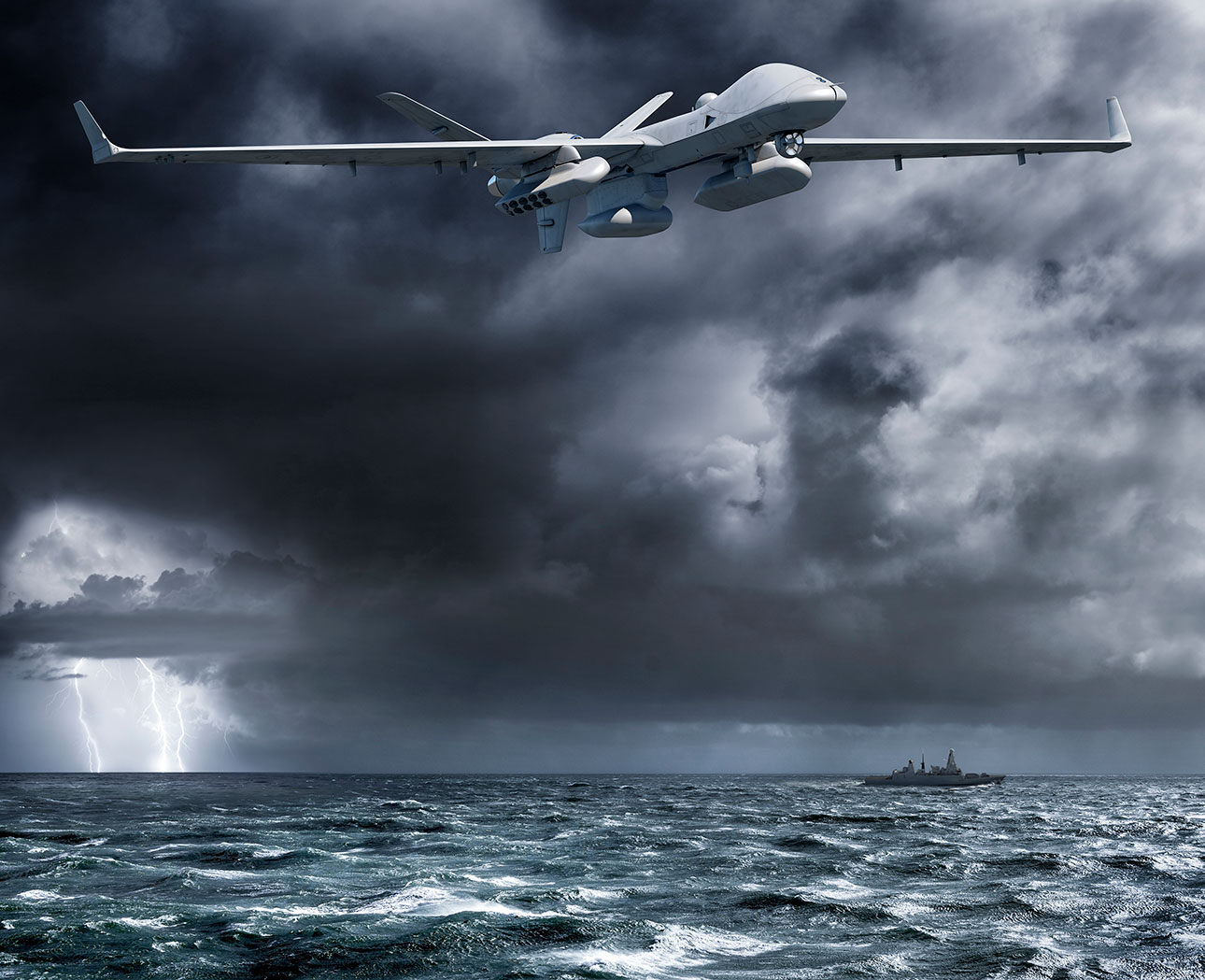
It certainly isn’t a new idea, back in July last year, General Atomics were pushing the MQ-9B in a maritime patrol role in Japan, touting its 35 hour endurance as being ideal for maritime patrol. Additionally, General Atomics demonstrated the capabilities of the MQ-9B in December last year to European nations.
Would it be a good idea for the UK, though?
Andy Netherwood, a veteran of 26 years service in the Royal Air Force with operational tours flying the C-130 and C-17 as well as staff tours in Strategy, Policy & Plans, Capability Development and on the Directing Staff at the UK Defence Academy, thinks it would be a good idea:
“MQ-9B SeaGuardian will be equipped with Leonardo’s Seaspray radar capable of detecting, tracking & classifying hundreds of maritime contacts. MQ-9B Protector enters service with the RAF in 2024; this seems like a sensible option to augment Poseidon.
It can be fitted with sonobuoy dispensers and also process data from sonobuoys dropped by other aircraft. Brimstone will be integrated on UK Protector & GA has talked about a lightweight torpedo for subs.”
You can read more from Andy on his Twitter account where he frequently discusses topical aviation news. I’d recommend following him if you don’t already.
Will it happen?
Hold on, let me just get next weeks lottery numbers for you. Joking aside, we can only wait and see if the UK plans to adopt this capability.


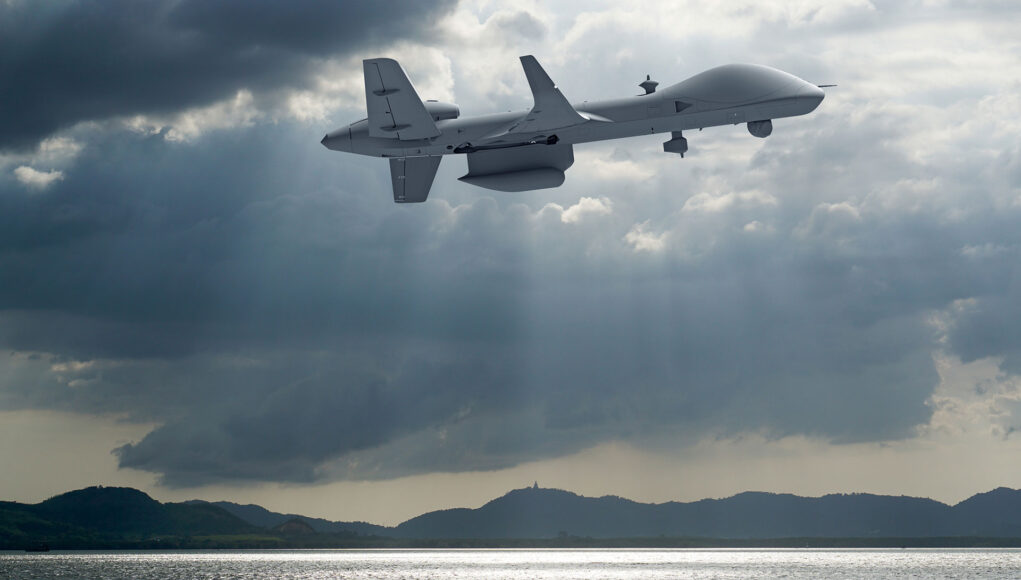











This would definately be a good way to enhance the UK’s MPA capability, but there are plenty of other goodies on the shopping list that might be higher up the priority list.
I would hope that the MoD gets its act together to spend the impressive up lift in defence spending sensibly. I would also like to see the UK develop a cross party consensus on defence so that we can get some long term stability in strategy and hence spend – but I guess there are limits to what is realistic.
Having said all of that I would strongly go for this option. Why? Well we talk about struggling to provide enough escorts for the CSG and enough attack subs to defend the deterent. It seems that we have all forgotten that the RN’s biggest responsibility and toughest and longest running battle in two World Wars was the Battle of the Atlantic! Hence any uplift in maritime patrol capability would be part of my priority.
Cheers CR
I agree about long term strategy, that is a root cause of so many problems in the country.
Everything is short term. That equates to cheaper now but more expensive and not fit for purposein the long term.
It applies not just to defence but literally everything.
The whole political system is short sighted and inefficient by design!
So are we considering more Protector air frames for this role or stretching the planned fleet further/more thinly. If more air frames then why not the Northrop Grumman MQ-4C Triton? I know same air frame has some cost savings but I believe ( and correct me if I’m worng) the Triton is already used by the Australians and US and integrated with the P8-A.
I agree that the MoD should buy more airframes if Protector is to be used in the Maritime role. I do have though some questions about the suitability of such an airframe being used in this way. Weather and wind North of Scotland is well terrible. So what is the weather limits on the airframe? I seem to have seen reports that the MoD is planning for 20 airframes in the Sea Guardian version. If that is correct then that will be a useful addition to the numbers.
As for Triton, yes it is used by the US and Aus in the Maritime role, but not in the anti sub role. Also it has the other issue of not having detect and avoid systems so it might not get clearance to operate in some areas.
All in all I would like to see either Protector or Triton possibly 18 dedicated airframes two linked to each Posidon which could act as a command aircraft. Such a Flight would mean covering more air and sea space and reduce flight hours on Posidon.
Only a pity that we can’t get these on our carriers, then again if we managed to launch and land Mosquito’s from our small armoured deck carriers in WW2 without Cats then we should be able to launch the MQ-9B SkyGuardian. The landing bit needs some work. If that could be solved then they could be used for long range anti sub and AEW to replace Crowsnest.
I wonder what will happen to Reaper and if there is any life left in the airframe, if so why not give them to the Border Agency or use them in the Carribean for anti drug patrols.
Thanks for adding some clarity, certainly the sense and avoid capability is missing. Triton, I believe has a higher service ceiling so could climb above any bad weather but of course still has to take off and land.
On the carriers they’ve even landed a C130 on carrier back in the 50s I believe. But traps would have been a useful addition, I’d imagine a Protector sized drone would have a relatively low deck speed with carrier turned into the wind. Quite sure the UK has the capability to automate carrier landing as we lead the development of the automated SBRVL for the F35.
Not sure a mq-9b Could land on a carrier, but perhaps with some sort of parachute and reverse thrust, and some sort of catapult to aid launch. Or we can look to use something like this https://uav-stol.com/ if we can get the radar to work in a small package. Has SAR already but not sure how it would work with the same radar as the helicopters use and can it be made under 30kg. Endurance 15 hrs, range 2000km. Or use the camcorder S100.
This was looked at (as Global Hawk – basically the same platform) a few years back. 6 airframes from NG would have cost $5bn and a 10 year support cost was the same cost. So, Bob Hope….
Makes eminent sense to consider drones for such duties. I believe within twenty years, drones will become the mainstay of numerous military duties, as unit and manning costs of ships, aircraft and tanks escalate exponentially.
On the surface this seems like exactly the kind of job drones are good for. I hope the future holds a carrier capable version.
The small drone torpedo is very interesting. That creates a lot of interesting ways to give teeth to even small ASW vessels. One to keep an eye on.
Just been checking if the MQ-9B has the same weapons lift ability as the Reapor then the inboard wing pilons could take in these postions upto 680kg which I think means 340 kg on each. If that is the case then we could have had Stingray if we still made them or the Mk54 one on each inboard pilon. Possibly we could use the Blue Shark from S.Korea. good speed, good range, cost effective and can easily be carried by the MQ-9B.
These very light weight torpedoes seem to have a lot of potential for use on drones.
https://www.northropgrumman.com/what-we-do/sea/very-lightweight-torpedo/
Good way to get large numbers of weapons out there.
The more obvious solution would be to follow the same path as the USN and RAAF and procure MQ-4C Triton:
https://m.youtube.com/watch?v=6_O3spdRcEE
Triton as been specifically developed to work in conjunction with P-8A Poseidon.
Triton is reported to operate at a much higher altitudes than SkyGuardian, well in excess of 50,000ft, and being jet powered, it’s faster too.
Cheers,
If we have the personnel maybe
MQ-4C Triton takes 4 ground crew were as the Protector ill likely be the same as the Reaper, just two ground crew
IIRC, Triton can’t be used in civilian-administered airspace, which effectively means they can’t be operated in the UK. Protector, on the other hand, has the appropriate systems to allow it to safely fly through this airspace to an operational area and that’s basically the whole reason we’re buying them.
Might be worth reading this in conjunction. https://www.defensenews.com/naval/2021/01/18/off-the-california-coast-the-us-navy-tests-hunting-subs-with-an-aerial-drone/
If it is in use over GIUK will we end up with mission creep where we have too few trying to be MPA, Sentinel replacement and their usual Middle East ISTAR duties at once.
And what of proper ASW? It won’t be able to prosecute targets?
Yes, for me P8 at just 9 aircraft is far too few considering Nimrod replacement was 21 then 18 then 16 then 12 then 9.
Absolutely Daniele, I hope we will at least order three more P8’s to add a little meat to the fleet
In reality, we need 9 more to have sufficient critical mass for Maritime patrol and Ground track radar system ‘canoes’ to replace Sentinel.
I think additional Sky Guardians used in conjunction with an enlarged P8 order, could potentially be a great force multiplier though..
If the P8s are going to have to cover what was Sentinel/ISTAR duties then either numbers need to be increased by half if not more or (hopefully) there’ll be questions asked by MPs about the maritime patrol aircraft spending more time over land in the ME than over water off the British coast. I think you could get away with a dozen if there were say two or three Protector in a maritime role and carrying sonobouys/torps attached to each. But then more need bought to fill that role plus carry out surveillance and strikes.
One question is what’s the likelihood of a LEO satellite constellation supplementing these tasks?
Perhaps another platform in the queue to receive Spear 3 as it can already carry Brimstone 2. A nice bit of flexible capability.
This is a great idea! Believe the MoD has signed the contract for 16 Protectors with an option for another 8 so i’d ideally look to get a follow on order for dual-mode versions.
Don’t even necessarily see the need for them to field torpedo’s. The ability to provide persistent surveillance and pinpoint any contacts for a P8 to then target would alone be a significant force multiplier.
Definitely a force multiplier but our geographic position and dependence on offshore wind, North Sea fossil fuels and maritime trade makes another 9 P8s essential.
My concern is the use of drones will be used to justify not doing this.
This may well end being the same story with the new ASV minesweeping order. A reason to scrap an existing capability without adequate replacement.
I hope I am proved wrong but the current defence review could well end having the same legacy as the 1957 Sandys defence review.
Drones tick the boxes of the “modernisation agenda” so they are the most likely thing to be bought. And as this is where the money tree is planted….
So yes, I hope that we do see drones augment the P8’s as they will be an excellent force multiplier even if they are used only for the hunting aspect and the P8, or other asset, does the engagement.
Simply increasing the radius of overwatch, with a couple of drones, gives the P8 a massive platform multiplier effect.
With SeaSpray, and other good things integrated into drones, then the kit is ready when a suitable VSTOL drone hits the market. It is only a matter of time as the carrying capacity of drones is increasing massively by the year. As we have commented before the drone will need to be GT powered both for endurance and for the radar power.
It will happen: I have confidence!
I would speculate that we will see a lot more drones being purchased, while traditional platforms are reduced. Predator has essentially taken over the strike role previously undertaken by light jets such as Jaguar and Harrier, and Protector will take this to a new level, so MPA, the ground surveillance role currently done by Sentinel and reconnaissance previously done by Tornado will all move over. Global Hawk is too expensive, but GA Avenger with the electronics from the Protector would be a reasonable bet for a bigger payload and faster speed. Similar with Watchkeeper, which appears finally to be coming good, the addition of Watchkeeper electronics to the larger Elbit Hermes 900 (which has already been tested by the Maritime and Coastguard Agency) would give a larger payload.
I think it should. From this site:
https://ukdefencejournal.org.uk/israeli-firm-providing-maritime-patrol-services-to-iceland/
https://www.airbus.com/newsroom/press-releases/en/2020/10/european-border-and-coast-guard-agency-frontex-selects-airbus-and-its-partner-iai-for-maritime-aerial-surveillance-with-remotely-piloted-aircraft-systems-rpas.html
I think an important component should be to get the drone with droppable life saving equipment.